Meet the Adorable Black-Capped Chickadee
Updated: Jul. 25, 2024
The black-capped chickadee is one of the friendliest fliers in North America. Learn more about their song, nest and more.
On This Page
What Does a Black-Capped Chickadee Look Like?
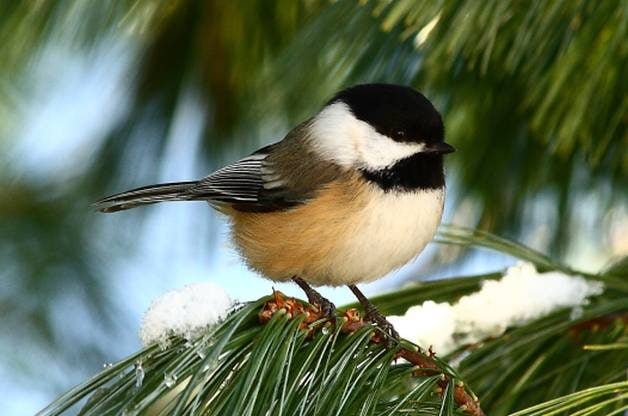
Check out 20 incredibly cute chickadee pictures.
What Do Black Capped Chickadees Eat?
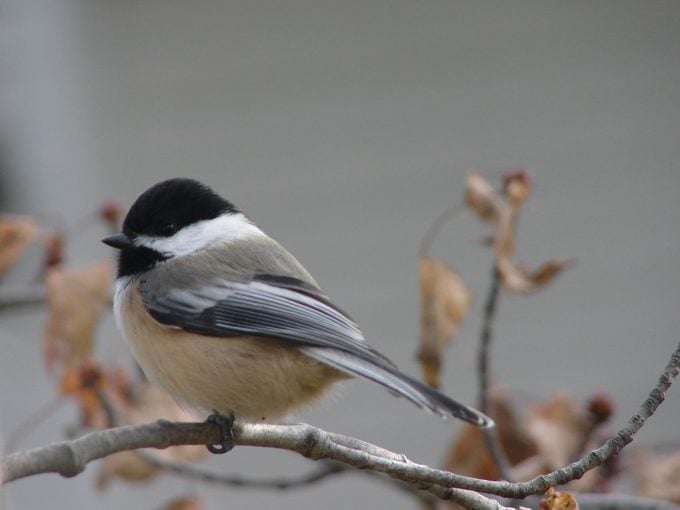
While black-capped chickadees tend to prefer insects, they’re not picky, which makes them excellent backyard feeder birds. Their diet consists of insects, berries and seeds. Backyard favorites include sunflower seeds, peanuts, suet and nyjer.
Tara has a few specific recommendations for those looking to bring in chickadees. “They like sunflower seeds, and they will also go for suet in the winter when they need the extra protein and fat,” she says. “Mealworms are also something they’ll go after, as well as peanut butter.”
As some birders might already know, black-capped chickadees tend to be quite curious about the world, and they’ll readily seize on new opportunities — including seed offered from a human’s hand. “I think they’re social by nature, and some of that transfers over to how they interact with other birds, or other wildlife, or people,” Tara says, in explanation for why chickadees have a reputation of being so friendly. “They’re quick to study and learn that ‘I’ve had positive experiences with XYZ, therefore I’m fine with XYZ.’ Or, vice versa: ‘This was a negative experience, so I won’t do that anymore.'” If you’d like to try hand-feeding a chickadee, here’s how to do it safely.
Learn how to identify and attract a Carolina chickadee.
Nest and Eggs
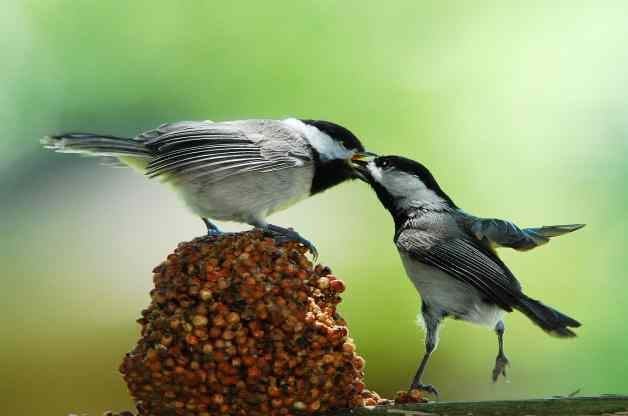
This species uses birdhouses and natural cavities to protect the nest made of plant fibers, wool, hair and moss. Six to eight white eggs with brown spots are housed inside.
On the subject of birdhouses, Tara says attracting nesting chickadees can be somewhat easier than bluebirds, or other species that use larger birdhouses and have to compete with house sparrows. “You can buy birdhouses that have a smaller entry hole, and that’ll work great for them,” she says. “You’ll be able to limit down to black-capped chickadees and wrens as the only species that’ll be able to fit in there.”
Learn how to identify and attract a mountain chickadee.
Black Capped Chickadee Sounds and Song
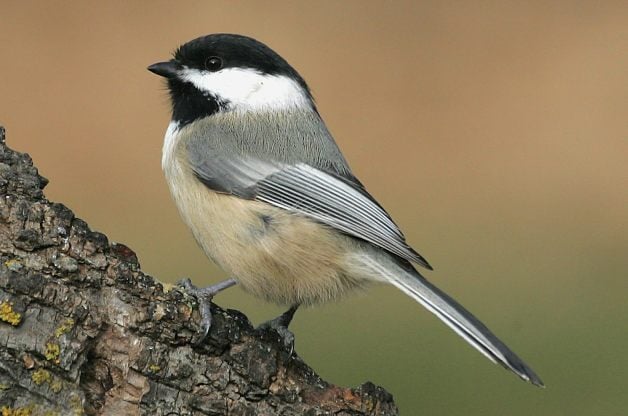
“Chick-a-dee-dee-dee” is its recognizable call; however, Tara recommends listening for another. “Their more unique call that I would say helps distinguish them from, say, a Carolina chickadee, is that they have a three-part song,” she says. “The second part is broken. I always tell people they say ‘cheese-bur-ger.'”
Listen to the black capped chickadee’s sounds.
Bird songs provided by the Cornell Lab of Ornithology.
Nuthatch vs chickadee: Here’s how to tell the difference.
Black-Capped Chickadee Range Map and Habitat
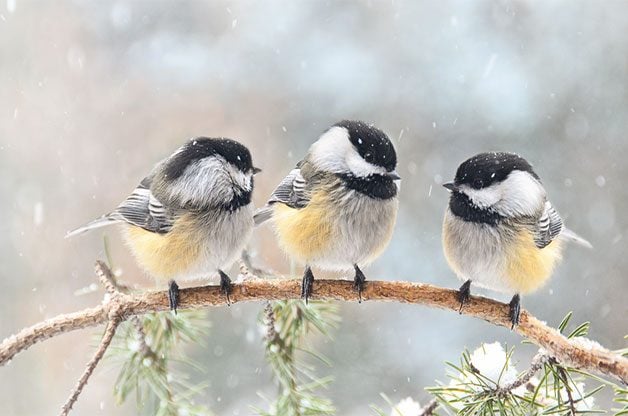
Look for these birds in wooded residential areas and open woodlands. Chickadees don’t migrate, so keep your backyard feeders clean and filled for these birds year-round.
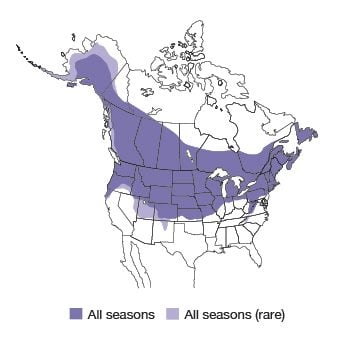
Range maps provided by Kaufman Field Guides, the official field guide of Birds & Blooms.
Ask The Experts
“How do you tell male and female black-capped chickadees apart?” asks Hannah and Lily Ashdown of Schuylerville, New York.
Kenn and Kimberly Kaufman: Male and female black capped chickadees look identical, at least to humans, so behavioral clues are the only ways to distinguish them. It’s mostly males that sing the signature fee-bee song. And, in aggressive encounters at bird feeders, males are usually dominant over females. In gentler times, a male will feed his mate during courtship. Both members of a pair hollow out a nest cavity in a tree, then the female builds a nest inside and incubates the eggs. After the eggs hatch, the male brings most of the food to the nest at first, while the female tends to the hatchlings.
About The Expert
Tara Hohman is the conservation science manager for Audubon Upper Mississippi Flyway. Her scientific work has included point count surveys and avian monitoring for species such as golden-cheeked warblers, piping plovers, and more. She holds a Bachelor of Science degree in wildlife biology from Texas State University, and a Master of Science degree in environmental science and policy from University of Wisconsin – Green Bay.
Sources
- Cornell Lab of Ornithology, “Black-Capped Chickadee: Overview“
- Audubon Field Guide, “Black-Capped Chickadee“





















